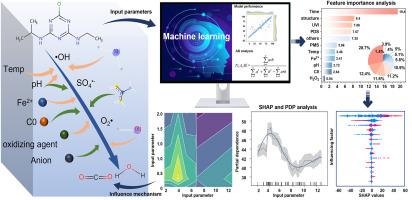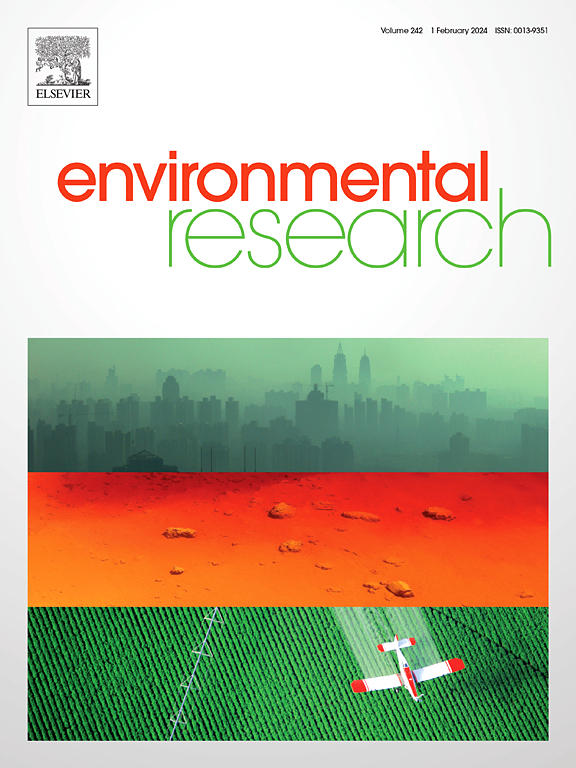Evaluating degradation efficiency of pesticides by persulfate, Fenton, and ozonation oxidation processes with machine learning
IF 7.7
2区 环境科学与生态学
Q1 ENVIRONMENTAL SCIENCES
引用次数: 0
Abstract
Quantifying organic properties is pivotal for enhancing the precision and interpretability of degradation predictive machine learning (ML) models. This study used Binary Morgan Fingerprints (B-MF) and Count-Based Morgan Fingerprints (C-MF) to quantify pesticide structure, and built the ML model to forecast degradation rates of pesticides by persulfate (PS), Fenton (FT) and ozone oxidation (OZ). The result demonstrated that the C-MF-XGBoost model excelled, achieving R2 of 0.914, 0.934, and 0.971 on test-sets for the above three processes, respectively. The model accurately linked molecular structural variations to degradation rates, demonstrating that impact of molecular structure on the degradation rate was observed to be 12.4 %, 15.2 %, and 21.6 % respectively, across a broader range of SHAP values. Additionally, optimal pH ranges were identified for PS (3.5–5.5) and FT (2.5–4.0), while OZ showed a positive correlation with pH. The model identified electron gain/loss groups' promoting/inhibiting effects on degradation rates and highlighted the significance of N atomic structures in PS. Then, Tanimoto coefficient was used to evaluate the applicability of the model. This study lays a groundwork for quantifying organic compound structures and predicting their degradation impacts, presenting a novel framework to assess future organic pollutants' degradation performance.

用机器学习评价过硫酸盐、Fenton和臭氧氧化过程对农药的降解效率。
有机性质的量化对于提高降解预测机器学习(ML)模型的精度和可解释性至关重要。本研究利用二元摩根指纹图谱(B-MF)和计数摩根指纹图谱(C-MF)对农药结构进行量化,并建立ML模型预测过硫酸盐(PS)、Fenton (FT)和臭氧氧化(OZ)对农药的降解率。结果表明,C-MF-XGBoost模型在上述三个过程的测试集上的R2分别为0.914、0.934和0.971。该模型准确地将分子结构变化与降解率联系起来,表明在更广泛的SHAP值范围内,分子结构对降解率的影响分别为12.4%、15.2%和21.6%。此外,确定了PS(3.5-5.5)和FT(2.5-4.0)的最佳pH范围,而OZ与pH呈正相关。该模型确定了电子增益/损失基团对PS降解率的促进/抑制作用,并强调了N原子结构在PS中的重要性,然后使用谷本系数来评价模型的适用性。本研究为有机化合物结构量化和降解影响预测奠定了基础,为评估未来有机污染物的降解性能提供了新的框架。
本文章由计算机程序翻译,如有差异,请以英文原文为准。
求助全文
约1分钟内获得全文
求助全文
来源期刊

Environmental Research
环境科学-公共卫生、环境卫生与职业卫生
CiteScore
12.60
自引率
8.40%
发文量
2480
审稿时长
4.7 months
期刊介绍:
The Environmental Research journal presents a broad range of interdisciplinary research, focused on addressing worldwide environmental concerns and featuring innovative findings. Our publication strives to explore relevant anthropogenic issues across various environmental sectors, showcasing practical applications in real-life settings.
 求助内容:
求助内容: 应助结果提醒方式:
应助结果提醒方式:


